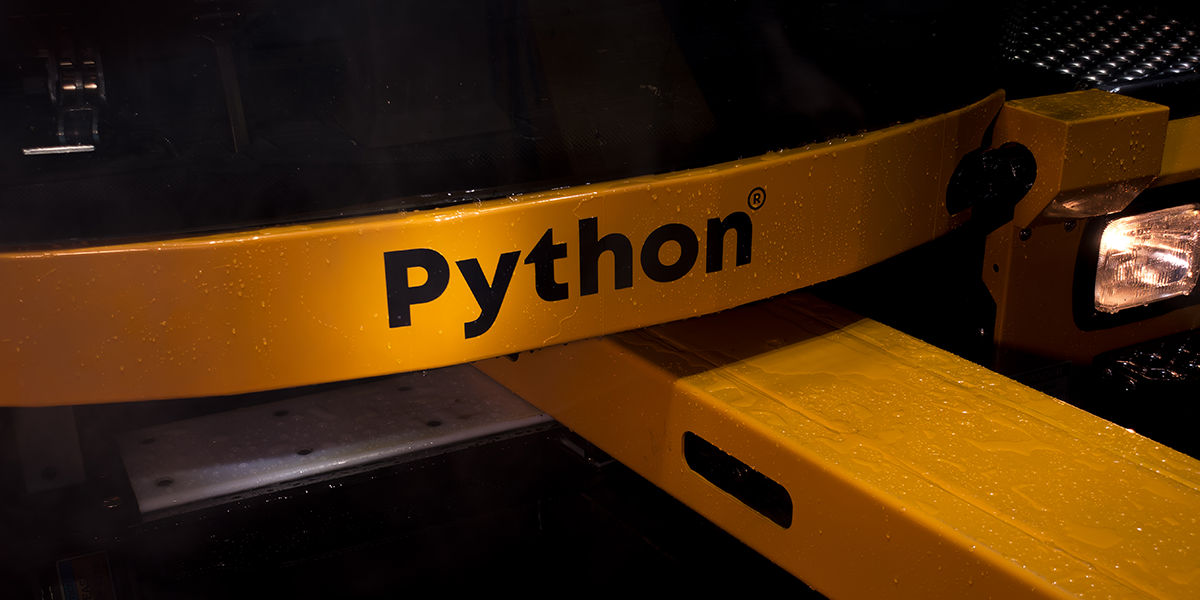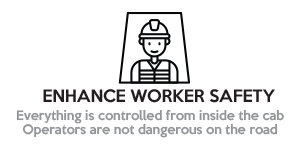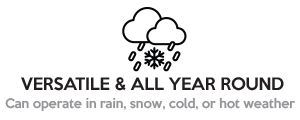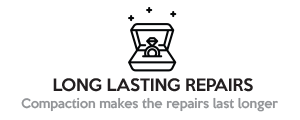What is the Python®
Python® is a self-propelled pothole patching machine that repairs asphalt pavement defects like potholes, trenches, and other surface irregularities. It was developed by Python Manufacturing, based in Regina, Saskatchewan, Canada, and is designed to make the pothole repair process quicker, more efficient, and longer lasting.
Python® uses an innovative process that involves blowing debris and moisture from the pothole with compressed air, applying a tack coat to the sides and bottom of the pothole, and then filling the pothole with a hot (or cold) mix of asphalt. The machine's unique conveyor system delivers the hot mix asphalt directly to the pothole, ensuring a smooth and even application.
Python® is designed for use in urban areas and can repair potholes in roadways, parking lots, and other paved surfaces. It is known for its high efficiency, ease of use, and ability to repair potholes quickly, even in adverse weather conditions. It is used in several countries, including the United States, Canada, Australia, and the United Kingdom. Municipalities and highway departments have praised it for significantly reducing the time and cost associated with traditional pothole repair methods.
Why Python®
Is your road maintenance plan still effective?
Your network of roads is constantly expanding, and the traffic on those roads is increasing exponentially. The method you use to fix potholes may have worked well 60 years ago, but does it still fit your current infrastructure? It's time to explore new ways of keeping your roads safe and well-maintained without exceeding your budget.
Do you want to save money?
Maintain your roads in good condition for less money. Building your roads costs millions of dollars, so make sure they last. Every year you extend the life of one of your roads, you'll save millions of dollars—repair potholes permanently rather than with temporary solutions that will need to be redone. Fix potholes while they're small to prevent damage to vehicles travelling on your roads.
Do you want to save lives?
Ensure your employees' safety while they're working on the roads. Too many workers suffer critical or fatal injuries while working on roads. Don't wait for the perfect time and weather to repair potholes, as they may become a danger and cause damage to vehicles. Prevent deadly accidents caused by potholes. Motorcycle riders will appreciate you providing them with a smooth, safe ride.
Do you need to maintain traffic flow?
Avoid disrupting traffic flow while repairing roads. Our network of highways is the circulatory system of our economy, and when we restrict traffic flow, we're impeding its lifeblood. The number of motor vehicles worldwide exceeded one billion in 2010. Every time you limit traffic flow, you impact the economy through lost productivity, late deliveries, and a ripple effect resulting in losses. Additionally, lost tempers and impatient drivers can cause these losses to multiply. When using Python®, there's rarely a need to close all or part of a road. The warning lights and arrows on the Python® are sufficient to alert drivers in lower-traffic areas. An accompanying vehicle(s) may be necessary on busier highways to control traffic flow around the Python®. This is known as a rolling traffic closure.
How Python® works
1. The operator loads the hopper with hot or cold asphalt, maintained at the desired temperature by absorbing heat from the engine exhaust.
2. Using controllers in the cab, the operator positions the working arm directly over the pothole.
3. An air jet nozzle clears the pothole of water, dust, gravel, and other debris, creating a clean surface for the patching material.
4. Depending on the conditions, the operator may apply an emulsive tack oil to the area.
5. The auger system effectively transports the necessary amount of asphalt mix from the hopper and pours it directly into the pothole.
6. Finally, the roller smooths and compresses the asphalt, resulting in a superior-quality, long-lasting patch surpassing the manual methods' effectiveness.
An average-sized pothole can complete this entire process in less than two minutes. The Python® is equipped with ample warning lights, eliminating the need for road closures on urban streets or less-travelled roads. However, a warning/crash truck can accompany the Python® to provide a rolling road on busy freeways.
1. Cost-saving: Python® enables you to save on patching costs using your asphalt mix.
2. Enhanced worker safety: With everything controlled from inside the cab, operators are not exposed to the dangers of working on the road, ensuring improved worker safety.
3. Versatile & All year round: Python® can operate in various weather conditions, including rain, snow, cold, or hot weather, making it a versatile solution for year-round pothole patching.
4. No road blockage: With an average repair time of just 2 minutes, Python® eliminates the need for road blockages, minimizing disruptions to traffic flow.
5. Flexible resource allocation: Since Python® requires only one person to operate, other resources can be assigned to different tasks, allowing for more efficient resource allocation.
6. Long-lasting repairs: The compaction process used by Python® ensures that repairs are durable and long-lasting, reducing the need for frequent patching.
7. One-person job: Unlike conventional methods that require 3 to 7 people, Python® can be operated by a single person, promoting social distancing and efficient utilization of human resources.







More about Python®
Download Python® 5000 series One-page Flyer
Download
Ver. 1.04 / Last Updated: 09 Feb 2023
Download Python® 5000 series Trifold Brochure (6 Pages)
Download
Ver. 1.02 / Last Updated: 09 Feb 2023
Watch Python® 5000 series Essential Video
Play
Last Updated: 09 Feb 2023
Choosing the right Python®
Python® has two models, the 5000 and 5000+, which vary depending on the engine type, and there are currently 6000 prototypes under development.
Python® 5000 (Available in international markets excluding North America and Europe: Tier 3)
The Python® 5000 is designed for use in regions outside North America or Europe, where access to Ultra-Low Sulfur Diesel Fuel may be limited. This self-propelled pothole patching machine offers cost savings while ensuring well-maintained streets and roads. It creates durable patches using standard asphalt mixes and can perform continuous repairs on long cracks and joints. One person can carry out the entire patching operation with the operator comfortably and safely in the cab.
Learn more >
![]()
Python® 5000+ (is designed for use in North America and Europe, while all other countries require ULSD fuel: Tier 4 Final)
The Python® 5000+ offers the same exceptional patching capabilities as our renowned Python® 5000, with the added advantage of Tier 4 Final Cummins engine to meet current environmental standards. This advanced machine efficiently repairs potholes in various weather conditions, saving time and reducing costs compared to alternative methods. It prioritizes safety for road workers and prevents damage and injuries caused by poorly maintained roads. With the Python® 5000+, you can achieve long-lasting repairs using standard asphalt mixes, whether hot or cold. It also has the unique ability to address long cracks continuously and road joins. With just one operator, your roads can be well-maintained throughout the year.
Learn more >
